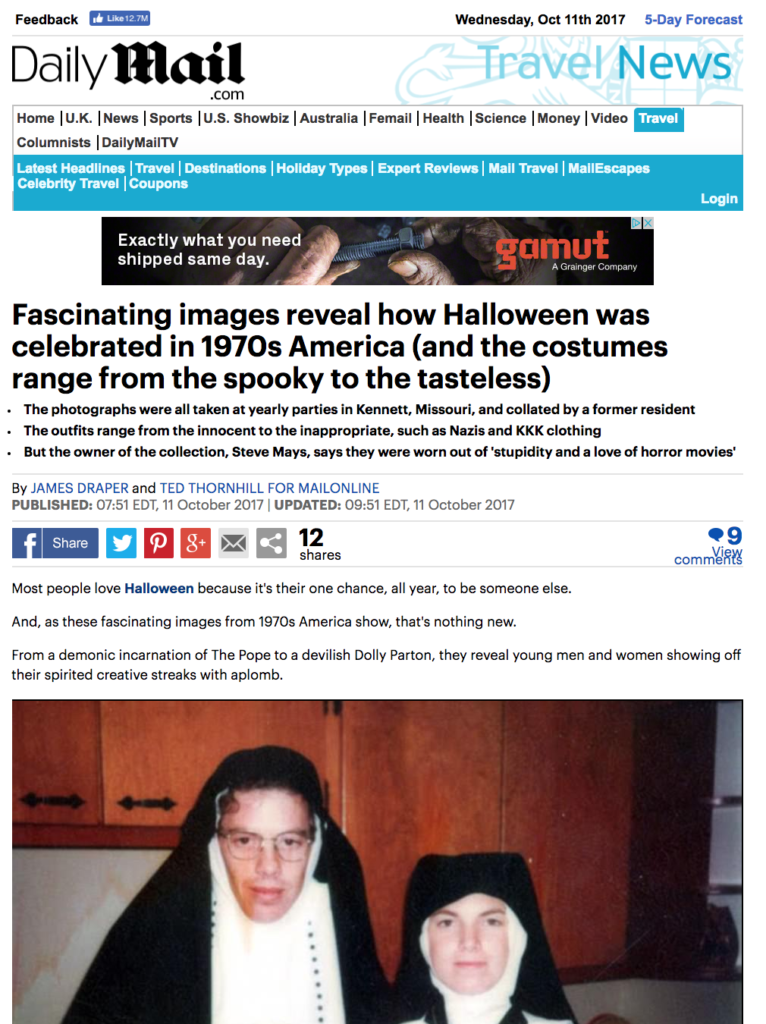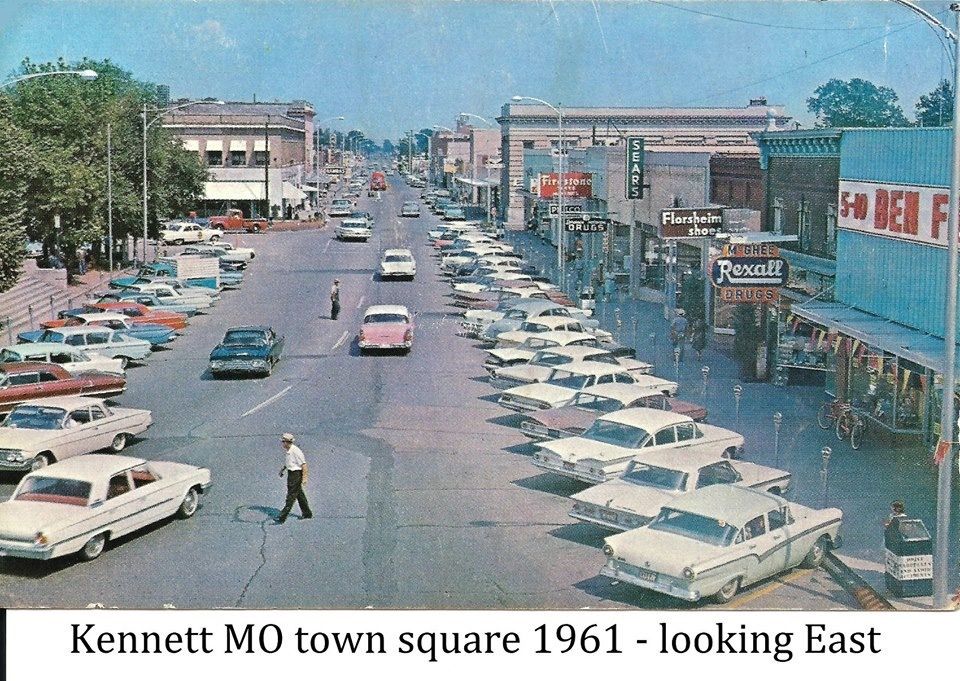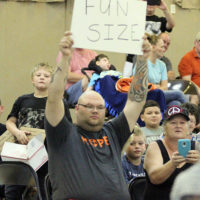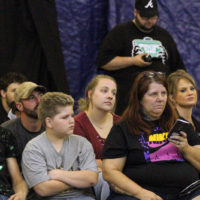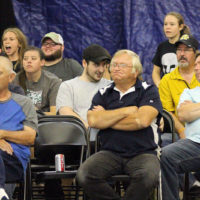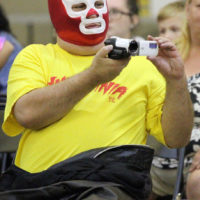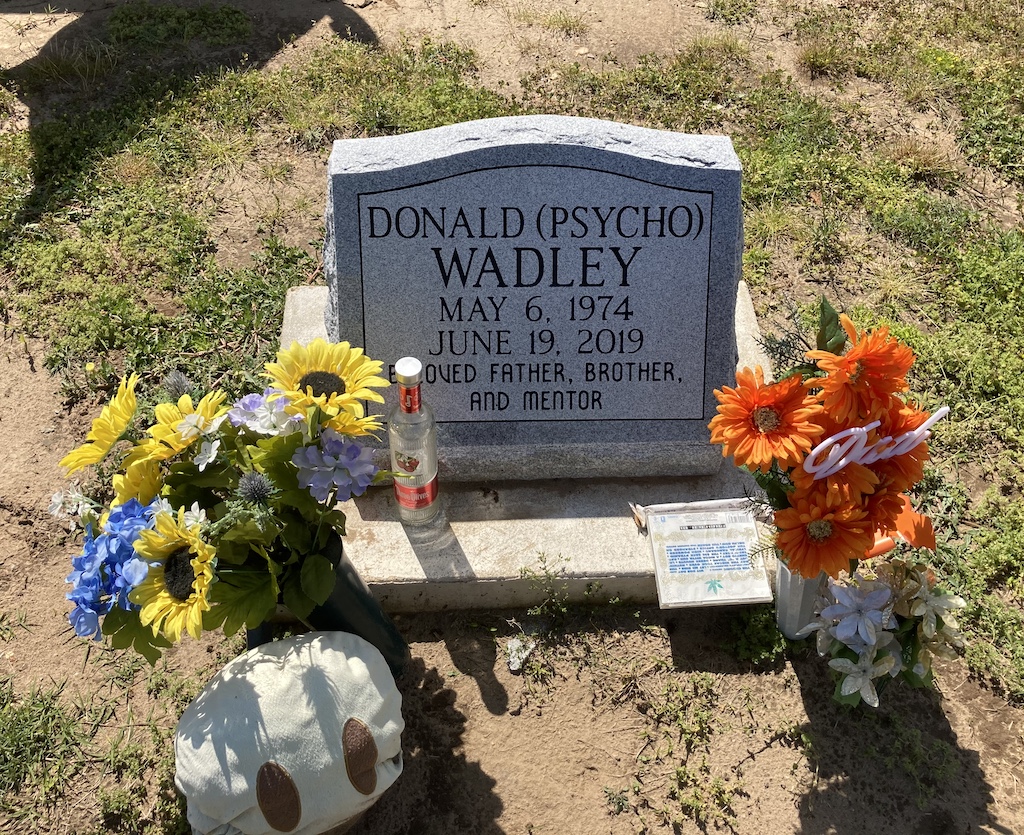
My friend John spotted this in one of the Kennett cemeteries. Would love to know the story
Tag Archives: kennett
HBO Intro (1983)
Lots of folks reading this weren’t born in 1972 when HBO launched. Hard to explain why it was such a big deal. If you wanted to watch a movie on TV back then, you waited for one of the networks’ “Movie of the Week” or something from a local affiliate. A cable channel that just showed movies (in those days) was a big deal. Met with a lot of skepticism (“Why would you pay for movies when you can get them for free?!”)
In 1983 HBO introduced a new logo that was revolutionary for the time. I share it because one of the people who worked on it (David Bruce) was from my little town. He did the Stargate effect which would be no big deal when computer generated graphics came along but was very cool in 1983.
Inside Sheryl Crow’s Country Home
If Kennett, Missouri, (my home town) has a claim to fame it’s Sheryl Crow. Says so on the “Welcome to Kennett” signs on each end of town. I’m 14 years older than Ms. Crow so we weren’t in school at the same time. I was more familiar with her folks. They lived just down the street (rectangle) from where I grew up.
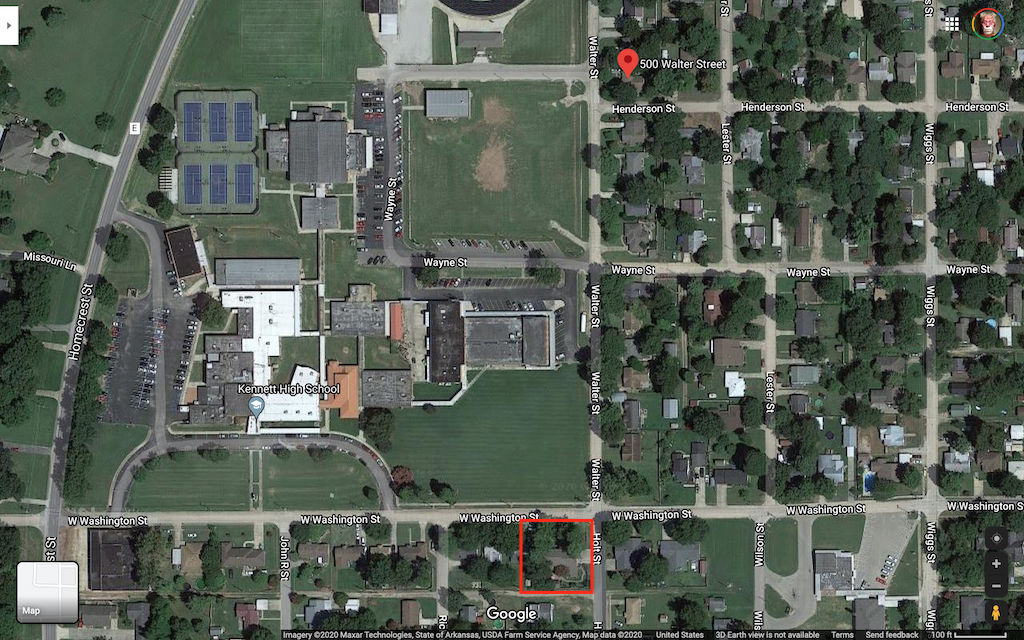
If you liked her before, you’ll love her even more after touring her home.
“How many more people have to die?”
What a closed rural hospital tells us about US healthcare

When I was growing up in Kennett, Missouri, in the ’50s and ’60s, the Dunklin County Memorial Hospital was… an institution. That’s where I had my tonsils removed and that’s where everybody went if you needed to be in the hospital. If you needed some kind of special treatment or care you probably went to one of the hospitals in Memphis, 100 miles away. The hospital closed last year, pushing the little town that much closer to… I’m not sure what.
“We’re having probably three to five more deaths a month without having the hospital here,” he said. “I had a 35-year-old patient who started having chest pain. He needed to get to an emergency room but died on the way to the hospital. There are multiple deaths due to not having emergency services, mostly from heart attacks and accidents. There’s nowhere to stabilise them. If they’re having a heart attack, they’re dying before they get to the hospital. Plus the infant mortality rate has increased since the hospital closed.”
It’s happening all over rural America. This article tells the story. As does RP.
UPDATE (5/15/20): Company announces plans to re-open hospital in Missouri’s poorest region. “Nine of the state’s ten poorest counties are in southeast Missouri, and the Bootheel is the state’s poorest region.”
Kennett, Missouri 1961
Richard Peck (1948-2019)
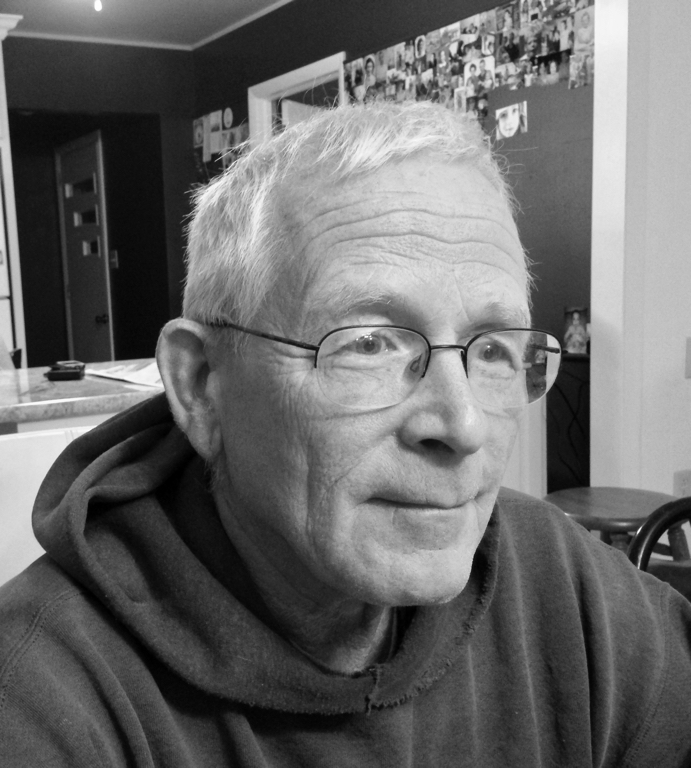 Richard was a poet, performance artist, sculptor, philosopher, film maker, handy-man and life-long friend.
Richard was a poet, performance artist, sculptor, philosopher, film maker, handy-man and life-long friend.
“Picture a very swift torrent, a river rushing down between rocky walls. There is a long, shallow bar of sand and gravel that runs right down the middle of the river. It is under water. You are born and you have to stand on that narrow, submerged bar, where everyone stands. The ones born before you, the ones older than you, are upriver from you. The younger one stand braced on the bar downriver. And the whole long bar is slowly moving down that river of time, washing away at the upstream end and building up downstream.
Your time, the time of all your contemporaries, schoolmates, your loves and your adversaries, is that part of the shifting bar on which you stand. And it is crowded at first. You can see the way it thins out, upstream from you. The old ones are washed away and their bodies go swiftly buy, like logs in the current. Downstream where the younger ones stand thick, you can see them flounder, lose footing, wash away. Always there is more room where you stand, but always the swift water grows deeper, and you feel the shift of the sand and the gravel under your feet as the river wears it away. Someone looking for a safer place to stand can nudge you off balance, and you are gone. Someone who has stood beside you for a long time gives a forlorn cry and you reach to catch their hand, but the fingertips slide away and they are gone. There are the sounds in the rocky gorge, the roar of the water, the shifting, gritty sound of the sand and the gravel underfoot, the forlorn cries of despair as the nearby ones, and the ones upstream, are taken by the current. Some old ones who stand on a good place, well braced, understanding currents and balance, last a long time. Far downstream from you are the thin, startled cries of the ones who never got planted, never got set, never quite understood the message of the torrent.”
–From John D. MacDonald’s Pale Gray for Guilt
UPDATE 6/16/19: Said goodbye to RP yesterday. His remains were cremated and placed in a .50 caliber ammo box (complete with small Confederate battle flag sticker) along with assorted mementos (a two dollar bill; some Risk pieces; etc). The ammo box was placed in the back of a new Cadillac hearse and transported to Piggott, AR for burial (a compromise with Rebecca). At the conclusion of the graveside service the minister reached down and blessed the ammo box. The End.
Air check
Don’t recall sharing this but it’s way too late in the game to fret over such things. This must be from late 70s or early 80s. There might be a dated reference but I don’t think I can stand to listen.
Professional wrestling is returning to Kennett
In the hierarchy of professional sports, professional wrestling is just below shooting rats at the town dump. But for some reason it was extremely popular where/when I grew up in the 50’s. Live coverage every Saturday morning by one of the Memphis TV stations. And these guys would take the show on the road, performing before packed houses. (I wrote about this ten years ago) And they’re back!
“Professional wrestling is returning to Kennett. Fall Brawl presented by American Hostile Championship Wrestling is slated to take place at the American Legion Building in Kennett Oct. 6. American Hostile Championship Wrestling owner Mark Manley said wrestlers scheduled to be on the six-fight card include: WWE Hall of Famer Koko B. Ware, Memphis Wrestling icon Superstar Bill Dundee, young up-comer Marko Stunt, the Missouri Bad Boys, Austin Lane, Meklakov, Naughty by Nature Rude and Kennett native J.T. Ice.”
Please note that Bill Dundee is now 74 years old.
UPDATE 10/9/18: Here’s the follow-up story on the “Fall Brawl” with accompanying photos. And just who are these small town fans of professional wrestling?
A Dying Town
The tagline for this story is: “Here in a corner of Missouri and across America, the lack of a college education has become a public-health crisis.”
1. This is a long-ish story. 2. This is not a happy story. Damned depressing, in fact. I share it because it’s about Kennett, Missouri, the small town where I grew up in the 50s and 60s and to which I returned as an adult in the 70s.
Kennett was a swell (yes, we used words like ‘swell’ back then) place to grow up. The good example of small town America in the mid-twentieth century. It was fraying around the edges by the time Barb and I left in the early 80s and these days I hardly recognize it on my infrequent trips back.
This story (from the Chronicle of Higher Education) paints a bleak picture of Kennett and thousands (?) of little towns like it across the country. The focus of the piece seems to be the link between education and health.
“People with less education are twice as likely, for instance, to die of lung cancer or COPD. Heart attacks and strokes are far more common for those without much schooling — one study found that heart-attack rates for middle-aged adults who hadn’t finished high school were double those with a college degree.”
Lots of well-documented factoids like this and while they’re hardly surprising, the author does a nice job of putting human faces on the data.
But for one fateful phone call back in ’84, I might still be living in Kennett, MO. Some of my lifelong friends still do. So this is a “what might have been” story for me in some ways.
Old Halloween pics featured in British tabloid
The Daily Mail is a British daily tabloid newspaper published in London. It is the United Kingdom’s second biggest-selling daily newspaper after The Sun. The editor of the travel section was looking for Halloween story ideas and came across our photos on Flickr. He asked if they could use the photos in a story and I said yes. Not sure why UK readers would be interested in 50 year old Halloween photos from the U.S. Perhaps they were on deadline and just needed a story.
